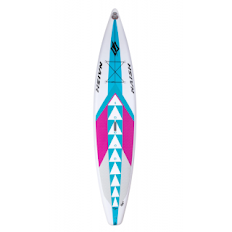What is Kitesurfing And How To Do It?
People nowadays are fun living and want to explore the globe. If we talk about beach vacations, there are plenty of fun activities that you can do to make your trip more adventurous and fun. Kitesurfing comes very first to my mind when talking about water sports. To make your kitesurfing safer and more fun, Naish kiteboards have prepared a list of tips including a guide and necessary information that will be helpful to you while kitesurfing. You can find the most useful information below on the basics of kitesurfing and the types of equipment that are used in the ride.
What Is Kitesurfing?
Kitesurfing is a combination of many sports, including skating, windsurfing, surfing, and windsurfing. Kitesurfing is riding and gliding across the sea while holding onto a large, wind-powered kite that is controlled by your hands. You don't need waves to ride a board on the ocean when kitesurfing or kiteboarding; instead, the wind and your board help you move forward. While kitesurfing is a new competitive professional sport, it has been a popular activity since the late 1970s. If you are starting your journey in kitesurfing and exploring different boards, we recommend you to consider Naish kiteboards.
Basic Kitesurfing Terms by Naish Kiteboards
Kitesurfing is a good activity to spend the best of your time in the water. If you practice some basic training techniques, you can master the sport.
Here are some basic terms related to kitesurfing:
Knot
One knot is equal to one nautical mile per hour, or 1.15 miles or 1.85 kilometers. In kiteboarding, the term "knot" is used to describe wind speed.
Offshore Wind
Offshore wind means that the wind is blowing to the water from the shore. It is suggested not to ride in offshore winds since you can end up somewhere too distant from the land.
Upwind/ Downwind
Upwind is swinging against the wind direction and downwind is the direction toward which the wind is blowing.
Chicken Loop
The chicken loop connects the rider to the hook on the bar control system.
Quick Release
A quick Release is a safety approach that means releasing from the kite or the leash in strong offshore wind conditions.
How to do Kitesurfing?
After learning some fundamentals, you need to keep practicing the basic moves. You will soon be riding with confidence.
What Equipment is Needed for Kitesurfing?
Kite
A kite is the main equipment for kitesurfing that attracts wind that will help you keep moving on the water. Many kites are designed for different purposes but the best is to use a large kite that is easily controlled.
Control Device and Ropes
Multiple ropes connect you and your control device to the kite. A special kitesurfing rope that helps you to sail on the water.
Kiteboard
A kiteboard is an essential piece of equipment for kitesurfing and comes with different types such as light-wind, twin-tip, directional, and foil kiteboards. They all have their advantages and disadvantages but twin-tip Naish kiteboards are general that can be used in almost any kitesurfing or any other surfing profession.
Life Jacket
A light life jacket is must-have equipment during a ride even if you are a skilled swimmer.
Harness
A body harness is an important piece of equipment that reduces the pressure from your arms and connects your torso to the control device.
Helmet
The helmet is a must to protect your head from strong winds and falls. Choose a waterproof helmet for kitesurfing.
Useful Advice for Kitesurfing
Naish Kiteboards advises you to always know the distance between you and the shore since offshore winds are dangerous that can drive you away from the land.
Visit Website.




Comments
Post a Comment